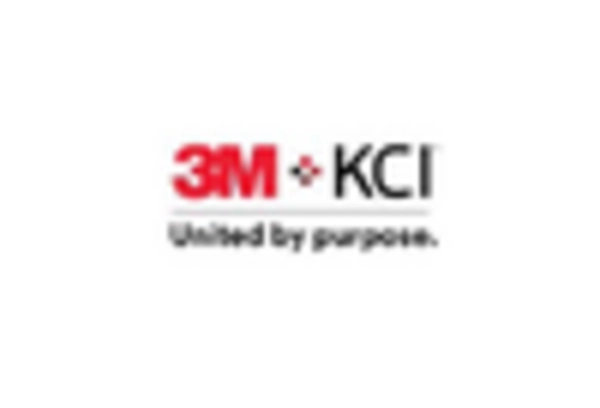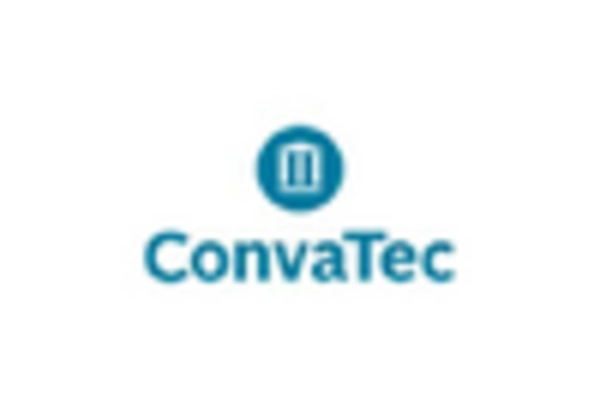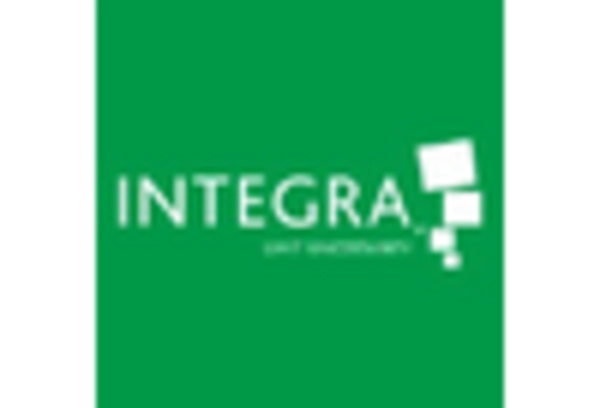Rising Healthcare Expenditure
The upward trend in healthcare expenditure is a significant driver for the Wound Care Biologics Market. As countries allocate more resources to healthcare, there is a growing emphasis on advanced treatment options, including biologics for wound care. Increased funding for healthcare systems allows for the adoption of innovative therapies that can improve patient outcomes. Market analysis reveals that regions with higher healthcare spending are more likely to invest in advanced wound care solutions, thereby propelling the growth of the Wound Care Biologics Market. This trend indicates a shift towards prioritizing effective and efficient treatment modalities, which could lead to a broader acceptance of biologic products in clinical practice. The correlation between healthcare expenditure and the adoption of advanced wound care solutions suggests a promising outlook for the market.
Advancements in Biologic Technologies
Technological innovations in biologics are transforming the Wound Care Biologics Market. The development of advanced materials and delivery systems enhances the effectiveness of biologic treatments. For instance, the introduction of growth factors, stem cell therapies, and tissue-engineered products has revolutionized wound healing processes. These advancements not only improve healing times but also reduce the risk of infection and complications. Market data indicates that the biologics segment is expected to witness substantial growth, driven by these technological advancements. As healthcare providers increasingly adopt these innovative solutions, the Wound Care Biologics Market is likely to expand, offering new opportunities for manufacturers and stakeholders. The continuous evolution of biologic technologies suggests a dynamic landscape that could redefine standards of care in wound management.
Increasing Incidence of Chronic Wounds
The rising prevalence of chronic wounds, such as diabetic ulcers and pressure sores, is a notable driver for the Wound Care Biologics Market. As the population ages and the incidence of diabetes escalates, the demand for effective wound care solutions intensifies. Reports indicate that chronic wounds affect millions, leading to significant healthcare costs and necessitating advanced treatment options. The Wound Care Biologics Market is poised to benefit from this trend, as biologic products offer innovative solutions that promote healing and reduce complications. Furthermore, the increasing awareness among healthcare professionals regarding the efficacy of biologics in wound management is likely to bolster market growth. This trend suggests a sustained demand for advanced wound care products, which could reshape treatment paradigms in the coming years.
Regulatory Support for Biologic Products
Regulatory frameworks that support the development and approval of biologic products are crucial for the Wound Care Biologics Market. Favorable regulations can expedite the introduction of innovative wound care solutions, thereby enhancing market growth. Regulatory agencies are increasingly recognizing the importance of biologics in wound management, leading to streamlined approval processes. This regulatory support encourages investment in research and development, fostering innovation within the Wound Care Biologics Market. As more biologic products receive regulatory approval, healthcare providers are likely to adopt these solutions, further driving market expansion. The interplay between regulatory support and market dynamics suggests a conducive environment for the growth of biologics in wound care.
Growing Awareness of Advanced Wound Care Solutions
The increasing awareness among healthcare professionals and patients regarding advanced wound care solutions is driving the Wound Care Biologics Market. Educational initiatives and training programs are enhancing knowledge about the benefits of biologics in wound management. As healthcare providers recognize the advantages of biologic products, such as improved healing rates and reduced complications, the demand for these solutions is likely to rise. Market data indicates that regions with higher awareness levels are experiencing accelerated growth in the adoption of biologics. This trend suggests that as awareness continues to spread, the Wound Care Biologics Market will witness a corresponding increase in product utilization. The emphasis on education and awareness could play a pivotal role in shaping the future landscape of wound care.

















Leave a Comment